Parallel measurement combination
When pairs of anemometers at the same height are available on your masts we can combine the measurements recorded by these instruments to reduce uncertainty using the Parallel Measurement Combination (PMC) task. The output is a set of calculated wind speed signals named PMCheight.
There is a significant slow-down in wind speeds downwind of a mast as illustrated in the graphic below where the wind is coming from the left of the image.
| Parallel wind speed measurements | Wind speed around a tubular mast, wind from the left |
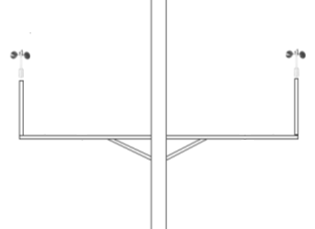 |
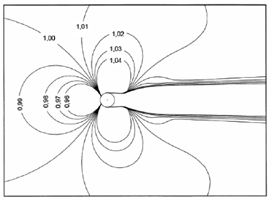 |
These mast wake effects can be significantly reduced by ignoring the measurements across defined low priority wind direction zones for either wind speed measurement, shown as the green and blue areas on the wind speed ratio plot below:
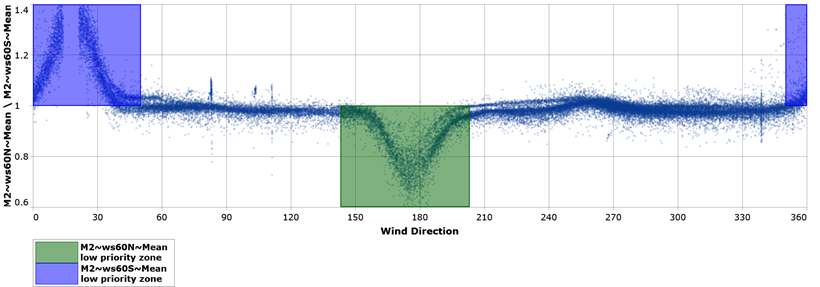
PMC can also reduce uncertainty by increasing data coverage as you may substitute missing records between the two measurements.
Parallel measurement combination process
Before executing the PMC analysis ensure that in the Measurement site configuration task you have set:
Boom orientations on each wind speed measurement, so that PMC auto-setup can identify the exclusion band centres.
Primary wind direction measurements for each mast. If not selected, the measurement at the greatest height is automatically selected to define the wind directions.
In the PMC task:
- Use the Auto-setup button to quickly define default PMC strategies for all wind speed measurement pairs and create the PMC calculated signals.
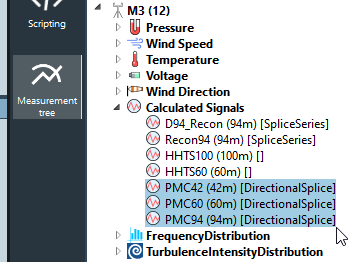
Use Generate report button to create a word report and visualise the parallel measurement recombination calculation results in more detail. In particular you should review the ratio plots to check that the low priority zones align with the wind speed ratio peaks that occur when one anemometer is wake effected.
If necessary adjust the boom orientation and exclusion widths such that the wind speed ratio plot peaks are covered by the low priority zones. Note that the boom orientation is 180 degrees from the centre of the low priority zone plotted in the report.
- If you know the mounting arrangements changed during the measurement campaign you can split a selected Parallel measurement combination period in two defining a different boom orientation for either period.

PMC Auto-setup options
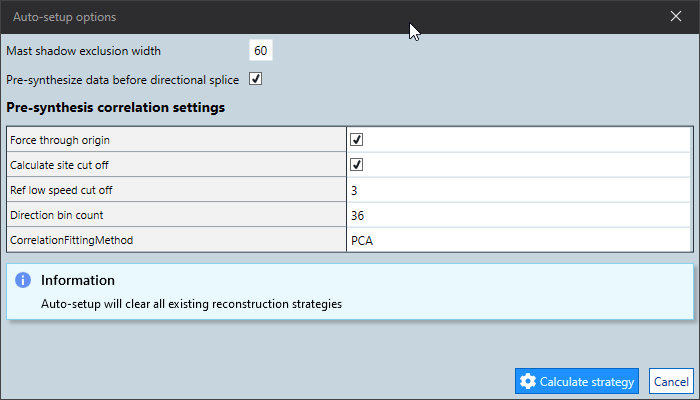
| Option | Description |
|---|---|
| Mast shadow exclusion width | Defines the default size of the low-priority zones in degrees, wind direction. |
| Pre-synthesize data before the directional splice | An optional first step in the PMC calculation: Wind speed correlations are calculated between the two wind speed measurements and wind speed data are synthesised and spliced to fill any gaps possible. This step reduces bias in the directionally spliced output for records where one measurement has missing data because the wind speed speedup relationship between dual anemometers usually varies smoothly by direction. |
| Pre-synthesis correlation settings | These are only relevant if Pre-synthesize data before the directional splice is checked. You are unlikely to need to edit these settings. These are the same Correlation settings found in Speed reconstruction except the default Direction bin count is 36, not 12, because a higher number of direction sectors is beneficial in PMC pre-synthesis to resolve the speedup variation with mast wake effects. |